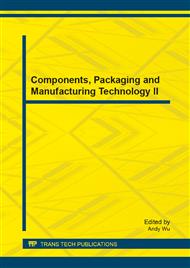p.63
p.70
p.75
p.80
p.86
p.92
p.96
p.101
p.105
Passenger Vehicle Clutch Reliability Optimization Based on the Stress-Strength Interference Model
Abstract:
With the progress of automotive engine technology, more strict requirements such as comfort, durability and more compact installation space are proposed to automotive transmission system. The failure rate of passenger car clutch is still high and its reliability has troubled users and manufacturers. The paper adopted system engineering analysis method for reliability analysis and optimization of passenger car clutch based on the stress - strength interference model. Compared with actual cases, probability and statistics theory is used to compare the failure rate and reliability, and the method is verified feasible. The method also can be applied to other dry friction type mechanical transmission system.
Info:
Periodical:
Pages:
86-91
Citation:
Online since:
February 2014
Authors:
Keywords:
Price:
Сopyright:
© 2014 Trans Tech Publications Ltd. All Rights Reserved
Share:
Citation:


